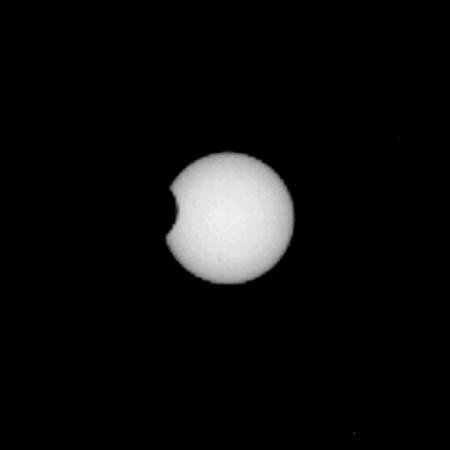
Scientists have finally found the reason behind the formation of Stickney crater on the surface of Phobos, the innermost and larger of the two natural satellites of Mars. The 9km wide and 22km deep crater is present on the surface of Phobos without destroying it.
US-based Lawrence Livermore National Laboratory (LLNL) conducted a study to find how the crater was formed. Models of asteroid or comet impact, whose impact is likely to have formed Stickney crater were created by physicists.
"We've demonstrated that you can create this crater without destroying the moon, if you use the proper porosity and resolution in a 3D simulation," said Megan Bruck Syal, one of the authors, according to the LLNL press release.
"There aren't many places with the computational resources to accomplish the resolution study we conducted," Syal added.
Several low resolutions imitations of an asteroid impact have been created in 2D before, but its quality was not good enough.
A range of speed and size combination is suggested in the models. The researchers estimate that an object of 820feet or 250meters which was travelling at a speed of 6km per second, which is roughly 14,000miles per hour, had impacted Phobos' surface without disrupting it.
A code called Spheral was used by the researchers at LLNL in order to model the Phobos impact. This code is being created to replicate the effects of methods for deflecting asteroids which are Earth bound.
"Something as big and fast as what caused the Stickney crater would have a devastating effect on Earth. If Nasa sees a potentially hazardous asteroid coming our way, it will be essential to make sure we're able to deflect it," Syal said.
"We'll only have one shot at it, and the consequences couldn't be higher. We do this type of benchmarking research to make sure our codes are right when they will be needed most," she concluded.














